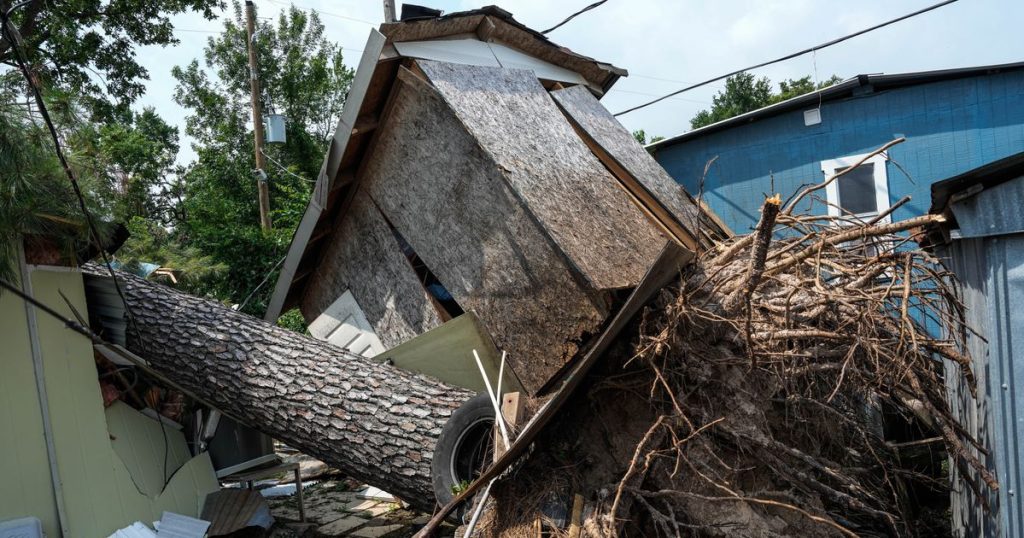Over the Memorial Day holiday weekend, a series of powerful storms swept through the central and southern U.S., resulting in the deaths of at least 21 people and causing widespread destruction to homes, businesses, and power infrastructure. The storms also occurred alongside an oppressive, early season heat wave that set records from south Texas to Florida, exacerbating the already dangerous weather conditions. Forecasters warned millions of people outdoors for the holiday to be vigilant and watch the skies, as the severe weather was expected to shift to the East Coast.
Kentucky Governor Andy Beshear declared a state of emergency in response to the severe weather, reporting four deaths in four different counties in the state. Additionally, seven deaths were reported in Cooke County, Texas, and eight deaths occurred in Arkansas, with two additional fatalities reported in Mayes County, Oklahoma. The storms left a trail of destruction in their wake, particularly in the tiny Kentucky town of Charleston, where a tornado touched down, causing significant damage and leaving residents without power, water, and other utilities.
The deadly storms were a bitter reminder of the devastating tornadoes that struck the region in December 2021, which claimed the lives of 81 people in Kentucky alone. Governor Beshear expressed gratitude that the damage from the Memorial Day storms was not as severe as it could have been, given the area’s heightened awareness of severe weather events. More than 400,000 customers across the eastern U.S. were left without power, with Kentucky being among the hardest-hit states, facing approximately 125,000 outages. The severe weather alert extended across a broad swath of the eastern U.S. from Alabama to New York.
President Joe Biden extended condolences to the families of those killed in the storms and assured them that the Federal Emergency Management Agency was conducting damage assessments on the ground. The president also reached out to governors to offer federal support where needed. The recent spate of severe weather events, including tornadoes in Iowa and deadly storms in Houston prior to the Memorial Day weekend, has underscored the urgency of addressing climate change and its contribution to the severity of storms worldwide. Harold Brooks, a senior scientist, pointed to a persistent pattern of warm, moist air as a factor in the increase in tornado activity in recent months.
The warm, moist air at the northern edge of a heat dome brought temperatures typically seen in mid-summer to late May, with the heat index reaching extreme levels in parts of south Texas. Record highs were forecast in multiple cities, such as Brownsville, San Antonio, Dallas, Miami, and others in Florida. The unprecedented levels of severe weather and tornado activity during this season have raised concerns about the impact of climate change on storm systems and the urgent need for mitigation efforts. The devastating toll of the recent storms serves as a sobering reminder of the vulnerability of communities to extreme weather events and underscores the importance of preparedness and resilience in the face of climate-related risks.


